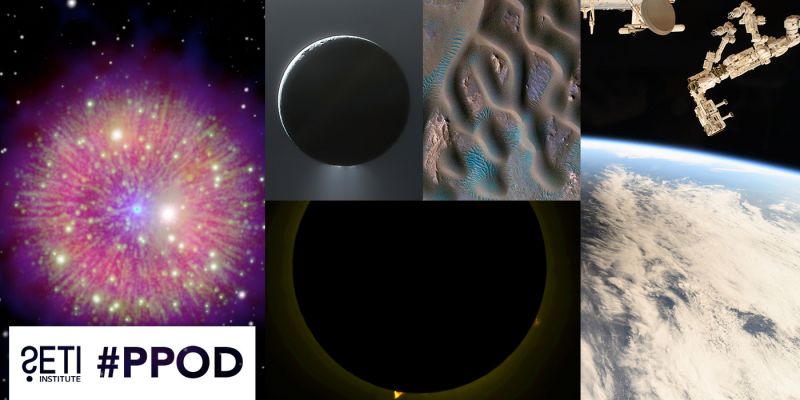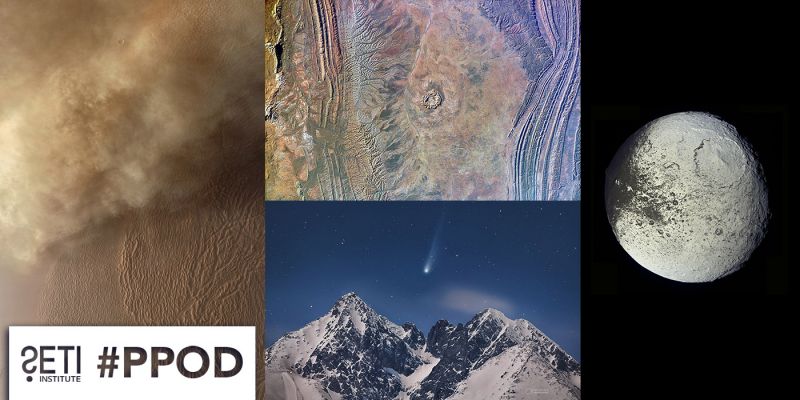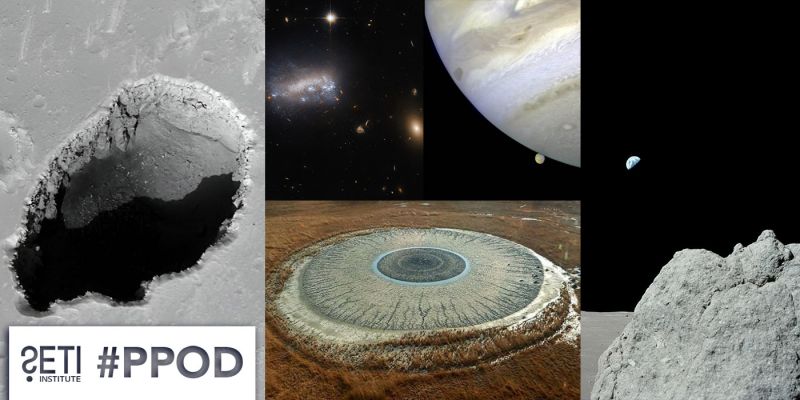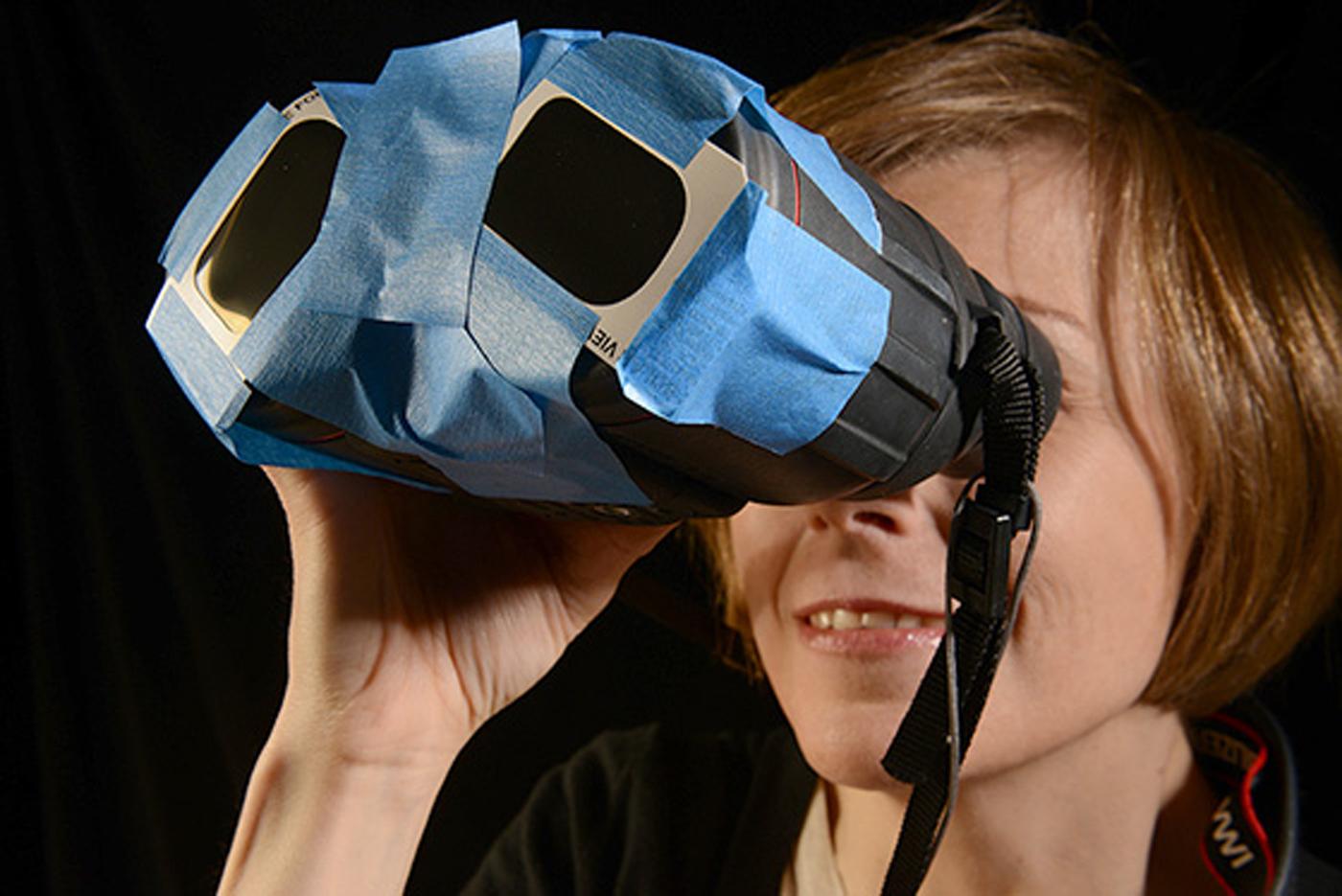
As most people are undoubtedly aware, there was a total eclipse of the Sun on August 21, prompting a great deal of interest. In fact, we are lucky to experience eclipses on Earth – even though the Moon is much smaller than the Sun, its position in the sky, and distance from both Earth and the Sun are what make such eclipses possible. Apparently in the future, this will not be the case. “The size of the sun hasn’t really changed over the age of Earth,” said SETI Institute scientist Matija Ćuk in an interview with NPR, “but the moon has been moving away from Earth over eons. So, in the past it looked bigger.” As a result, in about 600 million years people on Earth will no longer experience eclipses.
When a similar occurrence takes place between other planets and moons, that is, an object moving across the face of another, it’s known as a transit. In a transit, the light from the object’s star may not be completely shadowed, but dimmed. This dimming makes it possible for space telescopes, such as Kepler, to identify exoplanet candidates. "Direct imaging works the same way as eclipses are used to observe the sun," said SETI Institute scientist Franck Marchis. "We simply block, or 'occult,' the bright light coming from the star, so we can see the faint features surrounding the star."
- SETI.org: Eclipse! Time to Grab the Binocs
- SETI.org: Elliptical Triangle
- SETI.org: Everything You Wanted to Know About the Eclipse but Haven’t Gotten Around to Asking Yet
- NPR: Why Future Earthlings Won’t See Total Solar Eclipses
- Futurist: Catch the Eclipse While You Can – They Won’t Happen in the Future
- Space.com: How Eclipses Reveal Information About Alien Worlds, Light-Years Away
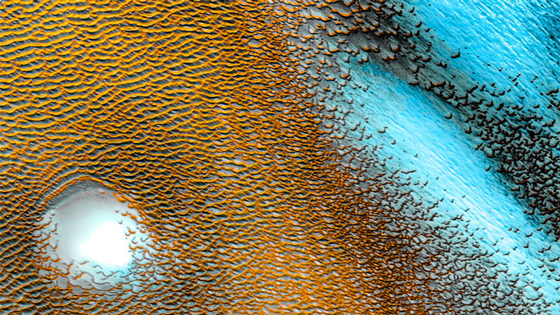 Ice on Mars and Planetary Protection
Ice on Mars and Planetary ProtectionOdyssey is a NASA spacecraft in orbit around Mars – it launched in 2001 and is still in orbit today. Odyssey uses instruments such as spectrometers and a thermal imager to study Mars’ geology and radiation levels in the environment, as well as find evidence of past or present water and ice. One of the instruments on Odyssey measures neutrons, which are subatomic particles that do not have an electrical charge. Hydrogen is the only atom that does not contain a neutron and therefore these neutron measurements help researchers infer the presence of water and ice on or near the planet’s surface. Now, a reanalysis of data from Odyssey has resulted in a more detailed map showing increased presence of ice on Mars than previously known. One of the key learnings is that not only is there evidence of ice in the polar regions of Mars, but also in equatorial regions.
This evidence of equatorial ice raises questions about planetary protection, which is not only concerned with protecting Earth from possible microbial alien life, but also with protecting the environments of other planets. If traces of water, not just ice, are present in these equatorial regions of Mars, it’s possible, though unlikely, that Earth microbes that survived spacecraft sterilization and hitched a ride to Mars could potentially survive on Mars. “You don’t want to take anything to an area where it could live or be preserved,” said SETI Institute scientist John Rummel. John suggested that Mars’ current environment couldn’t sustain Earth organisms, but if landing equipment generated heat that could melt existing ice on Mars, that could present a problem.
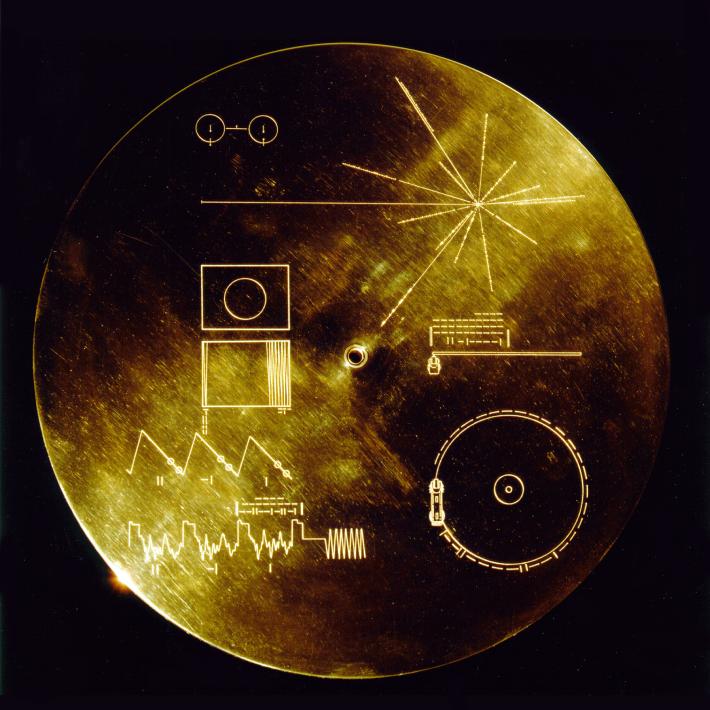 Voyager, the Golden Record and a Pulsar Map to Earth
Voyager, the Golden Record and a Pulsar Map to EarthAugust 25 marks the 40th anniversary of Voyager, the Golden Record and a map to Earth. Voyager 1 and Voyager 2 were launched in 1977 with an original mission to explore Jupiter, Saturn, Uranus and Neptune. Both probes remain active and are exploring interstellar space, sending data and images back to Earth. And each probe is carrying a copy of the Golden Record, which includes sounds and images portraying the diversity of life and culture on Earth.
Frank Drake, who conducted the first-ever SETI experiment and is Chairman Emeritus of the SETI Institute Board of Trustees was a member of the committee that determined what to include on the Golden Record, a committee that also included Carl Sagan.
The Voyager probes are also carrying a pulsar map designed by Frank Drake that would guide any alien life back to Earth. Pulsars are highly magnetic neutron stars that emit electromagnetic radiation and can stay active for potentially billions of years. Now that we know exoplanets with the potential to sustain life are more common than previously known, a discussion has begun about whether, when and how Earth should signal its presence to possible extraterrestrial intelligent life.
Despite some recent sensational headlines, Frank Drake doesn’t believe we should be overly concerned. “The pulsar map is not dangerous at all,” said Drake. “It will likely never even be seen by extraterrestrials. Even then, it will be perhaps millions of years from now.”
- National Geographic: How a NASA Spacecraft May Help Aliens Find Earth
- National Geographic: No, a Map NASA Sent to Space is Not Dangerous to Earth
- Newsweek: NASA’s Voyager Missions are Equipped with Maps that Could Lead Extraterrestrial Life to Earth
- Futurism: A 40-Year-Old Voyager Spacecraft Can Guide Aliens to Earth
- Alphr: In the 1970s NASA Built an Interstellar Map to Guide Aliens to Earth
- Boing Boing: A Map for Extraterrestrials to Find Earth
- Express: NASA Probes Launched in 1970s Reach Interstellar Space Giving Aliens Map of Route to Earth
- Fox News Science: Aliens Could Conquer Earth by Following ‘Dangerous’ Maps NASA ‘Foolishly’ Sent into Space
- The Courier Mail: Aliens Could Conquer Earth and Destroy Humanity by Following Maps NASA Sent into Space
- Mirror: NASA has Made it a lot Easier for Aliens to Attack Earth, Extraterrestrial Expert Warns
- Financial Express: Aliens Can Easily Attack Earth, Thanks to this ‘Foolish’ Act of NASA
- The Sun: Man’s Greatest Mistake?
The SETI Institute is leading a 5-year space science education program called Reaching for the Stars, NASA Science for Girl Scouts. Funded by NASA’s Science Mission Directorate, the program will offer girls the opportunity to explore science, technology, engineering and math (STEM) through new Space Science badges. Additionally, with funding from NASA, the program developed eclipse boxes filled with materials that allowed girls to explore space science and eclipse-related activities leading up to the August 21 solar eclipse.
“With the resilience, ingenuity, and courage Girl Scouts instills in girls, it’s no surprise that many female astronauts in the United States are Girl Scout alumnae,” said Edna DeVore, SETI Institute Fellow and Director of Education. “We recognize today’s girls are tomorrow’s STEM leaders, and with the new badges and programming, Girl Scouts everywhere will have access to even more of these opportunities, building the next generation of women leaders in STEM that we so desperately need.”
- SETI.org: Girl Scouts Works with the SETI Institute to Skyrocket Girls’ Interest in STEM
- SETI.org: Reaching for the Stars: NASA Science for Girl Scouts
- KGWN: Girl Scouts Partner with NASA to Skyrocket Girls’ Interest in STEM
- NBC 12: Girl Scouts Works with the SETI Institute to Skyrocket Girls’ Interest in STEM
- WKRN.com: Middle Tennessee Girls Scouts Have Chance to View Eclipse in Unique Way
- Fast Company: The Girl Scouts Just Teamed up with SETI for STEM Classes and Space Merit Badges
- C/Net: Girls Scouts Reach for Stars with NASA Space Merit Badges
- Mashable: New Girls Scout Badges Go Where Girl Scouts Have Never Been Before: Space
In last week’s Facebook Live, we talked about the 40th anniversary of the WOW! Signal with SETI Institute scientists Seth Shostak and Gerald Harp.
All SETI Institute Facebook Live Videos can be found on our Facebook page.
 Big Picture Science
Big Picture ScienceLast week, On Thin Ice discussed the implications of global warming with respect to losing global ice. This week’s encore presentation of Musical Universe explores sound in space.
- California Academy of Science NightLife, August 24, San Francisco, CA Franck Marchis will demonstrate the Unistellar telescope
- Space Station Museum, September 9 San Francisco, CA Screening of the movie Contact with commentary by Jill Tarter
- California Academy of Sciences Astronomy Lectures, September 11, San Francisco, CA Matt Tiscareno will about the end of the Cassini mission and the science of its grand finale.
- StarTalk Radio, September 16-17, Seth Shostak will guest host this Neil deGrasse Tyson radio program that explores science, pop culture and comedy.
- European Planetary Science Conference: September 17-22, Riga, Latvia SETI Institute Scientist Matt Tiscareno will present research on the planetary rings of Saturn and the Cassini mission.
- NightHowl, September 23, San Francisco, CA Franck Marchis will demonstrate the Unistellar telescope
- Menlo Park Library Science Night, September 28, Menlo Park, CA SETI Institute scientist Margaret Race will take part in the Menlo Park Library’s annual science night.
- Division of Planetary Sciences, October 15-20, Provo, UT SETI Institute Scientist Matt Tiscareno will present research on the planetary rings of Saturn and the Cassini mission.
- American Geophysical Union: December 11-15, New Orleans, LA SETI Institute Scientist Matt Tiscareno will present research on the planetary rings of Saturn and the Cassini mission.
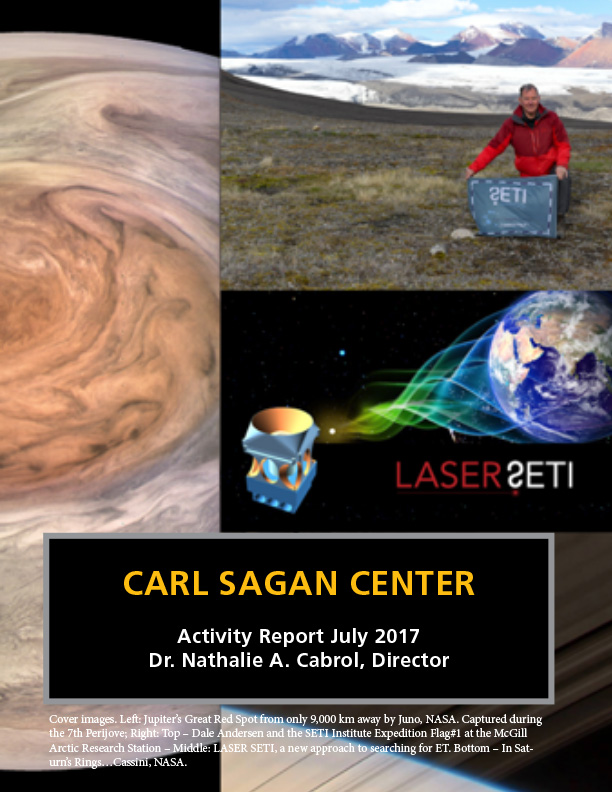
It has been another busy month at the SETI Institute, include publications, conferences, public presentations, field expeditions and more. Download full report
Some highlights include:
- 10 peer-reviewed articles from SETI Institute scientists Janice Bishop, Jan Cami, Nathalie Cabrol, Franck Marchis, Dale Andersen and Daniel Huber in publications including Icarus, Astrophysical Journal Geobiology, The Astronomical Journal andAstrobiology
- SETI Institute scientists Michael Busch, Franck Marchis, Melissa McGrath and Matt Tiscareno will have their research featured at the Division of Planetary Sciences meeting in October.
- The work of SETI Institute scientists was featured at several important scientific conferences and events:
- XVI International Clay Conference: Janice Bishop
- International Society for the Study of the Origin of Life: Gözen Ertem
- MCMC/ARC GCM Extended Group Meeting: Lori Fenton and Tim Michaels
- Fourth Conference on Early Mars: Virginia Gulick and Natalie Glines
- International Conference on Environmental Systems: John Rummel, Margaret Race and J. Andy Spry
- ISS R&D Conference: Oana Marcu
- Division of Dynamical Astronomy: Mark Showalter and Robert French
- Popular media featured the work of the SETI Institute as well:
- Gizmodo: Ross Beyer
- NBC News: Seth Shostak
- Science News: JR Skok and Matt Tiscareno
- Public presentations included:
- Franck Marchis: Astronomy on Tap, Observatoire de Marseille, and Observatoire de Paris
- Seth Shostak : SETI Talks
- Dale Andersen returned from a field expedition to the Canadian High Arctic – and returned the SETI Institute field expedition flag to headquarters
- Jeff Coughlin started a new position as director of the K2 Science Office
- Margaret Race was appointed field editor, planetary protection for the Encyclopedia of Astrobiology


